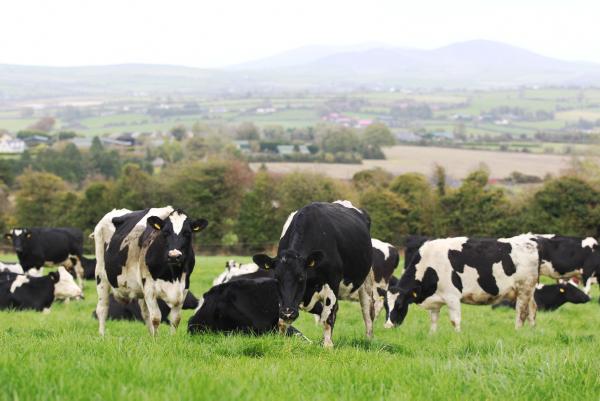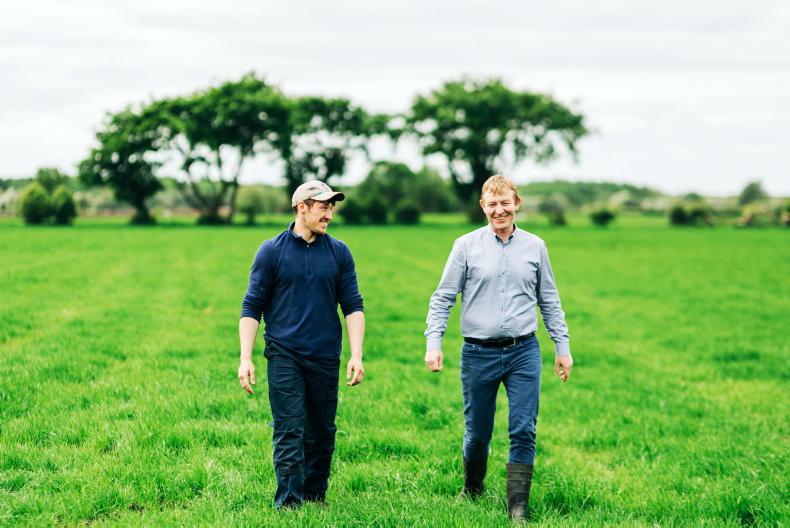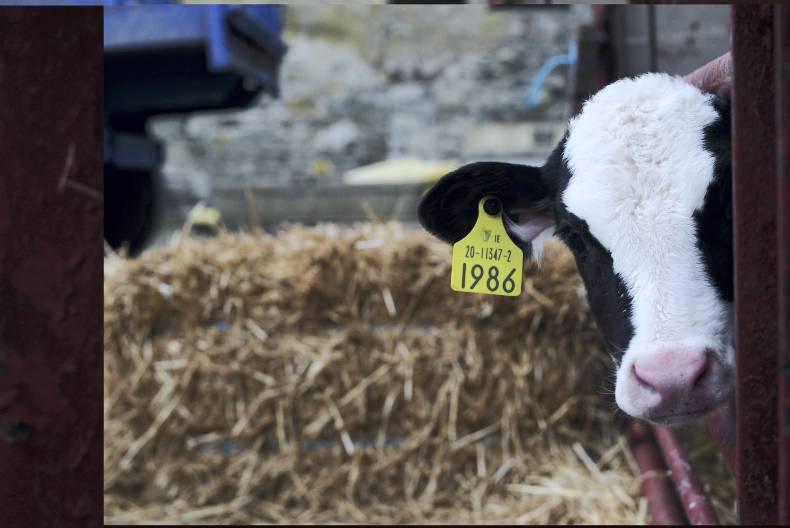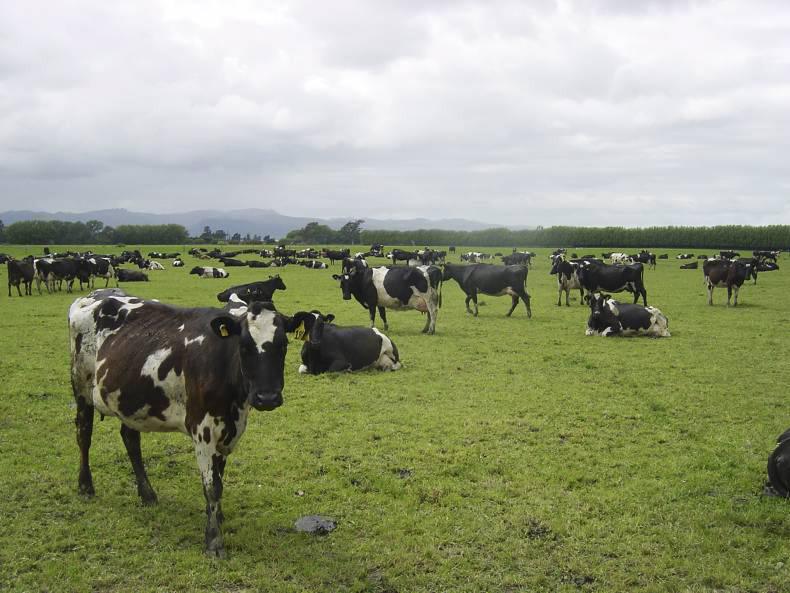A farm business with a combination of good land and facilities, productive dairy cows and skilled management has the potential for excellent profitability in Ireland.
Share farming is about bringing all these resources together. There are plenty of farm owners in the country with good land who would like to be in dairying, but they don’t have the skills or maybe the desire to milk cows.
There are also ambitious, skilled farmers in the country who own little or no land, but are passionate about managing cows and grass well.
Share farming is about the farm owner working with the skilled farmer to create a business profitable enough to supply an income to both parties.
In share farming, one party typically supplies the land and infrastructure needed to milk cows. The other party supplies all the labour needed to make the dairy farm work.
Either party can supply the cows needed to produce the milk. Machinery is dealt with in the same way or the farm can use contracting for most machinery work.
Both parties then split the milk cheque and certain costs (e.g. feed and fertilizer costs) in an agreed percentage, which will reward each party for what they are contributing to the business.
Why hasn’t share farming happened on dairy farms in the past?
Milk quota has been the main barrier. It limited the amount of milk that could be produced on a farm or prevented a potentially viable farm being converted to dairying.
The challenge in share farming is to produce two incomes from one farm, which typically means milking 130-plus cows depending on performance and milk price.
Next year, milk quotas will no longer limit cow numbers on any farm. Any arrangement will need enough land to support 130 plus cows, typically at least 50ha.
This will rule out the opportunity for some farm owners but still leaves a huge opportunity for share farming to improve farm profitability in Ireland.
Austin Finn, Macra’s newly-employed land mobility programme manager, has spent the last year meeting farmers around Ireland who are interested in trying a different farming arrangement.
He has been surprised by how many farm owners who have approached him that have farms big enough to support share farming and has several such opportunities on his books.
Some farmers with smaller land blocks are looking to get involved as a share farmer with a bigger land owner, so there are numerous opportunities.
Next year
There will be dairy farms in Ireland operating through a share farming structure next year. Many of those who have expressed interest so far are existing dairy farmers with significant potential for expansion, but are lacking man power.
This may be because they are late on in their farming career and have no interested successor or could be younger and trying to work off-farm also.
The choice is between hired labour and share farming. Hired labour means paying someone a wage to do a job. A share farmer receives no set wage and is willing to let his/her income depend on the performance of the farm (their share of the milk cheque minus expenses).
If the share farmer manages the farm well and produces extra milk sales worth €5,000, he/she gets to keep their percentage of this and the farm owner then also benefits. Both parties are taxed as independent farmers.
Other farmers interested in share farming are those looking to get into dairying. They are prepared to invest in the facilities needed to milk cows (a milking parlour, winter housing and grazing infrastructure).
For this investment to be successful, they need good stock and management to generate a return on their investment.
This opens the door for a share farmer to go into business with this land owner based on their own management expertise.
The ideal share farmer for this land owner is someone who can bring cows to the farm as it reduces the investment needed to get started.
This may be difficult to do for someone getting started in farming today as you would need a number of years to build up your own herd of cows.
However, there are farm managers and non-dairy farmers in the country who have been building dairy stock and are ready to begin share farming.
Skilled farmers
One of the issues Austin Finn has come across to date is a shortage of skilled farmers willing to engage with interested land owners in share farming.
This may be because it is a new type of farming venture in Irish dairying and there are no examples of people who have done it successfully here in the past. There are a range of backgrounds a share farmer might come from:
A dairy farmer on a small land block with limited opportunities to expand or a beef farmer who wants to grow a more profitable business.A second son or daughter who is not inheriting the farm but wants a career in farming.Someone from a non-farming background who wants to farm in their own right.A son or daughter who intends to return home to farm but not for a number of years.The key issue for a share farmer is having the skills to manage grass, cows and a business.
Share farming could provide a career route into farming for someone with the skills to farm well but who wasn’t lucky enough to be born into a farm.
International experience would suggest these can be some of the best farmers of all.
Dairying is the most profitable use of land in Ireland, but milk price volatility will be a challenge. A 1c/l rise or fall in milk price on a 150-cow farm means a difference of €7,500 in the pot. A 5c/l rise or fall means a difference of €37,500.
There will be good and bad years, but by ensuring a business has enough scale at the start and if managed well, the potential profitability of a successful dairy enterprise could provide both parties in share farming with a better future.
Supporting share farming
There is a lot work taking place to introduce share farming as an option for Irish farmers. Austin Finn has put several parties in contact who are currently looking to finalise an agreement. He is working closely with Teagasc, which is carrying out research into the scale needed for these arrangements to work and is in the final stages of producing a draft share farming contract for dairy farms.
There is also an established working group consisting of dairy farmers, farm managers and industry personnel who are trying to iron out as many potential issues as possible. They have made submissions to the Department on both the new CAP policy and the agri-taxation review with regard to share farming.
It is hoped to set up a demo programme for people to see dairy share farming happening and understand the benefits better.
Who pays for what?
The farm owner and share farmer will agree a percent of the milk cheque each should get based on who is contributing what to the business.
An agreement where the farm owner provides land, infrastructure and stock and the share farmer provides labour might range from a 70:30 to a 80:20 split, depending on the size of the farm (Teagasc have a calculator for this).
Where the share farmer provides all stock and labour, this might be closer to a 50:50 split. Each party pays the same percent of the variable costs as they receive of the milk cheque, for example they get 30% of the milk cheque and pay for 30% of the bills. Where both parties own cows on the farm (stock can be owned by two parties within the one herd number), each gets a percent of cull and calf sales and must rear their own replacements.
Views of an Irish share milker in New Zealand
Olin Greenan is from a dairy farm just outside Clones, Co Monaghan. In 2001, he travelled to New Zealand and since then has built a career for himself through share farming, or share milking as it’s more commonly known in New Zealand.
Today, he owns 450 cows and is married to Anna (from New Zealand) and they had their first child, Jack, last year.
Olin’s goal is to achieve farm ownership via share milking, something that has been possible in New Zealand via growing your wealth in stock.
On a recent trip back home, I caught up with Olin to discuss how share farming might work here.
Olin stressed how share farming has to be a win-win for both parties.
“Share farming works because the person managing the farm is incentivised to do the best possible job as he/she receives a percent of the milk cheque and pays for the same percent of the costs.
“This creates a more profitable farm, which both the farm owner and share farmer then get a share of. One third of all farms in New Zealand are operated via share farming on the back of this principle.”
How well a farm owner and share farmer can work together is a crucial part of the arrangement and Olin has concerns about the lack of experience of a lot of Irish farmers in this area.
“It’s a big culture shift to be able to let someone else manage your farm. It should be agreed at the start how the farm is to be run and after that, there is a bit of give and take required from both parties.
“Views may differ on certain management decisions but the important thing is that both realise they are in business together. A consultant or adviser can help iron out these issues.
“In share farming we each have our own percentage of the business but ultimately our fates are linked.
“You need to be confident from the start that you can work well with the other person. A good interview and screening process is important for this.”
It is also important as a share farmer to be realistic about how long it takes to improve farm performance – this is very unlikely to happen in the first year.
Does Olin think share farming can attract young people into farming in Ireland like it has in New Zealand?
“I think it could be slow at the start as it’s a new concept to Ireland. But it’s great to hear that there are a few farms interested in it already and it will grow from there.
“A lot of people will need to see it to believe it. Scale is an obvious challenge and milk price will also have a huge effect on profit, but I would be positive.
“As a young farmer, the ability to build €70,000 worth of stock and pay no tax on it via stock relief is a massive boost to a young farmer in Ireland.
“The most important thing for a young person is to develop the skill and experience to manage a farm business well and to be clear on their future goals.
“If you love farming, have the skills and are willing to work hard, I think it’s a great career route.”
A farm business with a combination of good land and facilities, productive dairy cows and skilled management has the potential for excellent profitability in Ireland.
Share farming is about bringing all these resources together. There are plenty of farm owners in the country with good land who would like to be in dairying, but they don’t have the skills or maybe the desire to milk cows.
There are also ambitious, skilled farmers in the country who own little or no land, but are passionate about managing cows and grass well.
Share farming is about the farm owner working with the skilled farmer to create a business profitable enough to supply an income to both parties.
In share farming, one party typically supplies the land and infrastructure needed to milk cows. The other party supplies all the labour needed to make the dairy farm work.
Either party can supply the cows needed to produce the milk. Machinery is dealt with in the same way or the farm can use contracting for most machinery work.
Both parties then split the milk cheque and certain costs (e.g. feed and fertilizer costs) in an agreed percentage, which will reward each party for what they are contributing to the business.
Why hasn’t share farming happened on dairy farms in the past?
Milk quota has been the main barrier. It limited the amount of milk that could be produced on a farm or prevented a potentially viable farm being converted to dairying.
The challenge in share farming is to produce two incomes from one farm, which typically means milking 130-plus cows depending on performance and milk price.
Next year, milk quotas will no longer limit cow numbers on any farm. Any arrangement will need enough land to support 130 plus cows, typically at least 50ha.
This will rule out the opportunity for some farm owners but still leaves a huge opportunity for share farming to improve farm profitability in Ireland.
Austin Finn, Macra’s newly-employed land mobility programme manager, has spent the last year meeting farmers around Ireland who are interested in trying a different farming arrangement.
He has been surprised by how many farm owners who have approached him that have farms big enough to support share farming and has several such opportunities on his books.
Some farmers with smaller land blocks are looking to get involved as a share farmer with a bigger land owner, so there are numerous opportunities.
Next year
There will be dairy farms in Ireland operating through a share farming structure next year. Many of those who have expressed interest so far are existing dairy farmers with significant potential for expansion, but are lacking man power.
This may be because they are late on in their farming career and have no interested successor or could be younger and trying to work off-farm also.
The choice is between hired labour and share farming. Hired labour means paying someone a wage to do a job. A share farmer receives no set wage and is willing to let his/her income depend on the performance of the farm (their share of the milk cheque minus expenses).
If the share farmer manages the farm well and produces extra milk sales worth €5,000, he/she gets to keep their percentage of this and the farm owner then also benefits. Both parties are taxed as independent farmers.
Other farmers interested in share farming are those looking to get into dairying. They are prepared to invest in the facilities needed to milk cows (a milking parlour, winter housing and grazing infrastructure).
For this investment to be successful, they need good stock and management to generate a return on their investment.
This opens the door for a share farmer to go into business with this land owner based on their own management expertise.
The ideal share farmer for this land owner is someone who can bring cows to the farm as it reduces the investment needed to get started.
This may be difficult to do for someone getting started in farming today as you would need a number of years to build up your own herd of cows.
However, there are farm managers and non-dairy farmers in the country who have been building dairy stock and are ready to begin share farming.
Skilled farmers
One of the issues Austin Finn has come across to date is a shortage of skilled farmers willing to engage with interested land owners in share farming.
This may be because it is a new type of farming venture in Irish dairying and there are no examples of people who have done it successfully here in the past. There are a range of backgrounds a share farmer might come from:
A dairy farmer on a small land block with limited opportunities to expand or a beef farmer who wants to grow a more profitable business.A second son or daughter who is not inheriting the farm but wants a career in farming.Someone from a non-farming background who wants to farm in their own right.A son or daughter who intends to return home to farm but not for a number of years.The key issue for a share farmer is having the skills to manage grass, cows and a business.
Share farming could provide a career route into farming for someone with the skills to farm well but who wasn’t lucky enough to be born into a farm.
International experience would suggest these can be some of the best farmers of all.
Dairying is the most profitable use of land in Ireland, but milk price volatility will be a challenge. A 1c/l rise or fall in milk price on a 150-cow farm means a difference of €7,500 in the pot. A 5c/l rise or fall means a difference of €37,500.
There will be good and bad years, but by ensuring a business has enough scale at the start and if managed well, the potential profitability of a successful dairy enterprise could provide both parties in share farming with a better future.
Supporting share farming
There is a lot work taking place to introduce share farming as an option for Irish farmers. Austin Finn has put several parties in contact who are currently looking to finalise an agreement. He is working closely with Teagasc, which is carrying out research into the scale needed for these arrangements to work and is in the final stages of producing a draft share farming contract for dairy farms.
There is also an established working group consisting of dairy farmers, farm managers and industry personnel who are trying to iron out as many potential issues as possible. They have made submissions to the Department on both the new CAP policy and the agri-taxation review with regard to share farming.
It is hoped to set up a demo programme for people to see dairy share farming happening and understand the benefits better.
Who pays for what?
The farm owner and share farmer will agree a percent of the milk cheque each should get based on who is contributing what to the business.
An agreement where the farm owner provides land, infrastructure and stock and the share farmer provides labour might range from a 70:30 to a 80:20 split, depending on the size of the farm (Teagasc have a calculator for this).
Where the share farmer provides all stock and labour, this might be closer to a 50:50 split. Each party pays the same percent of the variable costs as they receive of the milk cheque, for example they get 30% of the milk cheque and pay for 30% of the bills. Where both parties own cows on the farm (stock can be owned by two parties within the one herd number), each gets a percent of cull and calf sales and must rear their own replacements.
Views of an Irish share milker in New Zealand
Olin Greenan is from a dairy farm just outside Clones, Co Monaghan. In 2001, he travelled to New Zealand and since then has built a career for himself through share farming, or share milking as it’s more commonly known in New Zealand.
Today, he owns 450 cows and is married to Anna (from New Zealand) and they had their first child, Jack, last year.
Olin’s goal is to achieve farm ownership via share milking, something that has been possible in New Zealand via growing your wealth in stock.
On a recent trip back home, I caught up with Olin to discuss how share farming might work here.
Olin stressed how share farming has to be a win-win for both parties.
“Share farming works because the person managing the farm is incentivised to do the best possible job as he/she receives a percent of the milk cheque and pays for the same percent of the costs.
“This creates a more profitable farm, which both the farm owner and share farmer then get a share of. One third of all farms in New Zealand are operated via share farming on the back of this principle.”
How well a farm owner and share farmer can work together is a crucial part of the arrangement and Olin has concerns about the lack of experience of a lot of Irish farmers in this area.
“It’s a big culture shift to be able to let someone else manage your farm. It should be agreed at the start how the farm is to be run and after that, there is a bit of give and take required from both parties.
“Views may differ on certain management decisions but the important thing is that both realise they are in business together. A consultant or adviser can help iron out these issues.
“In share farming we each have our own percentage of the business but ultimately our fates are linked.
“You need to be confident from the start that you can work well with the other person. A good interview and screening process is important for this.”
It is also important as a share farmer to be realistic about how long it takes to improve farm performance – this is very unlikely to happen in the first year.
Does Olin think share farming can attract young people into farming in Ireland like it has in New Zealand?
“I think it could be slow at the start as it’s a new concept to Ireland. But it’s great to hear that there are a few farms interested in it already and it will grow from there.
“A lot of people will need to see it to believe it. Scale is an obvious challenge and milk price will also have a huge effect on profit, but I would be positive.
“As a young farmer, the ability to build €70,000 worth of stock and pay no tax on it via stock relief is a massive boost to a young farmer in Ireland.
“The most important thing for a young person is to develop the skill and experience to manage a farm business well and to be clear on their future goals.
“If you love farming, have the skills and are willing to work hard, I think it’s a great career route.”










SHARING OPTIONS